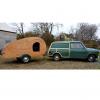
#1

Posted 18 November 2013 - 09:33 PM
#2

Posted 18 November 2013 - 10:29 PM
#3

Posted 19 November 2013 - 08:30 AM
Dont the tanks also need to be pressurised? Buying a purpose MPI tank may be easier.
#4

Posted 19 November 2013 - 12:22 PM
You can T the return line back in to the feed just before the pump, it just needs to be on the low pressure side. That will save modding the existing tank as well.
#5

Posted 19 November 2013 - 10:20 PM
So if I understand this correctly..the injection system will create a higher pressure, due to the pump I presume. I must admit I was thinking about an injection tank. Just was wondering if I could get away without having to buy a new one....Dont the tanks also need to be pressurised? Buying a purpose MPI tank may be easier.
#6

Posted 19 November 2013 - 10:21 PM
interesting idea. Would I need an external pump in this case? I assume the low pressure side is the feed into the pump?You can T the return line back in to the feed just before the pump, it just needs to be on the low pressure side. That will save modding the existing tank as well.
#7

Posted 20 November 2013 - 05:41 PM
I thought all injection systems worked on a build up of air pressure in the tank to force fuel into the injectors that are controlled by the ECU? I have had countless bikes that were injection and worked on this principle. I recently done a supercharger / injection upgrade and fitted an MPI tank, was £90 off ebay.
#8

Posted 20 November 2013 - 06:52 PM
I thought all injection systems worked on a build up of air pressure in the tank to force fuel into the injectors that are controlled by the ECU? I have had countless bikes that were injection and worked on this principle. I recently done a supercharger / injection upgrade and fitted an MPI tank, was £90 off ebay.
Are you sure your bikes worked that way? I don't know bikes but cars don't work that way. The fuel pump is just that, a fuel pump, not an air pump. In fact when the car is running there is a mild vacuum in the tank. The injection minis use a non venting cap which when you open it will hiss, that's air going in, not air escaping under pressure.
The in-tank pumps generate their pressure by drawing fuel in and sending it out under pressure. The return just flows back into the tank this way. If you pressurise the tank your whole fuel circuit is under whatever tank pressure you have and a regulator wouldn't work because you have no LP side to discharge surplus pressure to.
Ann Wilson you don't have to return the fuel into the tank, Andy500 is right you can feed it back to the LP side of the pump, which yes would be an external pump.
If you did do a full return line you would braze or silver solder it but there is probably a raft of legal considerations about modifying a stock tank. Easier and safer to T it in.
Edited by nz_seamless, 20 November 2013 - 06:53 PM.
#9

Posted 20 November 2013 - 08:03 PM
thanks for the info here. I must admit the idea of T ing it back into the low pressure side of the pump is an idea I had not thought of and like. Could I get away with 8mm internal diameter copper pipe to flow back? There is no danger of the pump drawing air?Are you sure your bikes worked that way? I don't know bikes but cars don't work that way. The fuel pump is just that, a fuel pump, not an air pump. In fact when the car is running there is a mild vacuum in the tank. The injection minis use a non venting cap which when you open it will hiss, that's air going in, not air escaping under pressure.I thought all injection systems worked on a build up of air pressure in the tank to force fuel into the injectors that are controlled by the ECU? I have had countless bikes that were injection and worked on this principle. I recently done a supercharger / injection upgrade and fitted an MPI tank, was £90 off ebay.
The in-tank pumps generate their pressure by drawing fuel in and sending it out under pressure. The return just flows back into the tank this way. If you pressurise the tank your whole fuel circuit is under whatever tank pressure you have and a regulator wouldn't work because you have no LP side to discharge surplus pressure to.
Ann Wilson you don't have to return the fuel into the tank, Andy500 is right you can feed it back to the LP side of the pump, which yes would be an external pump.
If you did do a full return line you would braze or silver solder it but there is probably a raft of legal considerations about modifying a stock tank. Easier and safer to T it in.
Cheers for info so far...
#10

Posted 20 November 2013 - 08:25 PM
I'm going round a similar loop at the moment but I'm installing an injection system into a MK2 Metro...
I've decided that the simplest thing is to get a tank from a later MK3/Mk4 metro which already has the high pressure pump inside.... Likewise you can do the same with an MPi tank, or an SPi tank but you may need to change the pump depending upon the pressure you need at the injector rail.
To save running a return pipe, I'm creating a local return via a pressure regulator, so from the pump in the tank it goes through the regulator with one line connecting to the original fuel pipe and then to the injector rail which is blanked at the other end to maintain pressure, and then the 'relief' pipe on the regulator is returned straight back to the tank..
If you do use the original tank you will need to braze a return pipe in, but I would suggest steel rather than copper. It's not good to join two differing metals.
#11

Posted 20 November 2013 - 08:46 PM
T the return to the LP side of he pump and the existing tank will be fine.
#12

Posted 21 November 2013 - 11:05 AM
:snip:
To save running a return pipe, I'm creating a local return via a pressure regulator, so from the pump in the tank it goes through the regulator with one line connecting to the original fuel pipe and then to the injector rail which is blanked at the other end to maintain pressure, and then the 'relief' pipe on the regulator is returned straight back to the tank..
:snip:
Interesting approach and you ain't no dummy so this isn't meant as an attack on you at all, but I can't help but wonder what the automakers know that we don't. Running a full return is more expensive vs what you describe, yet they all do it. I wonder if the engine fuel need changes under acceleration and your live fuel rail is 3m of pre-pressurised fuel, does the rail pressure maybe dip down until the regulator senses the pressure differential.
I guess having it up front, with the regulator downstream of the injector rail means that you always have a surplus of pressure to waste, which would give a stable feed. Where as if you have it after the regulator you have already capped the pressure and changes in draw will result in a less stable rail pressure.
It would be interesting to see how the pressure holds up with a changing draw with the feed coming from before and after the regulator. Might be significant, might be academic.
#13

Posted 21 November 2013 - 12:46 PM
I'm going round a similar loop at the moment but I'm installing an injection system into a MK2 Metro...
I've decided that the simplest thing is to get a tank from a later MK3/Mk4 metro which already has the high pressure pump inside.... Likewise you can do the same with an MPi tank, or an SPi tank but you may need to change the pump depending upon the pressure you need at the injector rail.
To save running a return pipe, I'm creating a local return via a pressure regulator, so from the pump in the tank it goes through the regulator with one line connecting to the original fuel pipe and then to the injector rail which is blanked at the other end to maintain pressure, and then the 'relief' pipe on the regulator is returned straight back to the tank..
If you do use the original tank you will need to braze a return pipe in, but I would suggest steel rather than copper. It's not good to join two differing metals.
The only problem with this is that if the regulator is located at the tank then the fuel pressure will have to remain at a constant as you will be unable to reference manifold pressure. Not the end of the world on a NA engine as good mapping and oversized injectors etc can help iron things out, however this will typically be at the sacrifice of some other element such as idle quality, low end performence or efficiency throughout the rev range. This is why OEM's whack the regulator at the end of the fuel rail. Also remember how the FPR works....by controlling flow in the return line, (like a bypass valve). Locating the reg a long way from the fuel rail will ultimatly impact how quick/responsive the fuel rail pressure is to changing engine conditions, again not the end of the world on a NA engine but performance of some kind could suffer. The point of FI over a carb is the accuraccy at which it can deliver its fuel over a wide range of ambient and engine conditions so why go to the trouble if its not going to be quite right just for the sake of some copper pipe? Each to their own though I guess and just my thoughts.
#14

Posted 21 November 2013 - 01:38 PM
I don't disagree with anything said above, and was originally how I was going to do it.... but it was the guys at SC which suggested it... you could say... nothing ventured nothing gained...
#15

Posted 21 November 2013 - 01:46 PM
Plenty of turboers just Use a Tee on the tankside, as above. It could well be a better idea since the outlet from a carb tank will be smaller than any of the ports on your injection system.You could also construct a tiny reservoir to help match the differing pipe sizes.
Guessworks, I'm not sure what you'd gain from a pressure regulator, isn't there already one on the end of your fuel rail / injector? Adding another could affect its operation by altering the pressure differential across it. Unless, of course, you're up to something far more crafty 'n exotic ![]() .
.
Following some of the bumf from the earlier days of turbo'ing Minis (about keeping the return as high as possible), I put my return in with a bulkhead compression joint through the fuel gauge sender. I wonder if it was just because we copied the original Metty Turbo, which pinched the filler neck vent pipe as a return?
Also tagged with one or more of these keywords: engine
Mini Technical Sections →
Problems, Questions and Technical →
‘93 Spi Downpipe ReplacementStarted by ShabbyMini , 03 Apr 2025 |
|
|
||
Mini Technical Sections →
Problems, Questions and Technical →
93 Italian Job Wont StartStarted by Mattnumber2 , 28 Mar 2025 |
|

|
||
Mini Technical Sections →
Problems, Questions and Technical →
NewbieStarted by adenton , 23 Mar 2025 |
|

|
||
Mini Technical Sections →
Problems, Questions and Technical →
Tips On Buy An Used Su Hs4 CarbStarted by hfolguera , 17 Mar 2025 |
|

|
||
Mini Technical Sections →
Problems, Questions and Technical →
Engine Has Been Sat 10 YearsStarted by JHN_mini , 15 Mar 2025 |
|
|
1 user(s) are reading this topic
0 members, 1 guests, 0 anonymous users
















